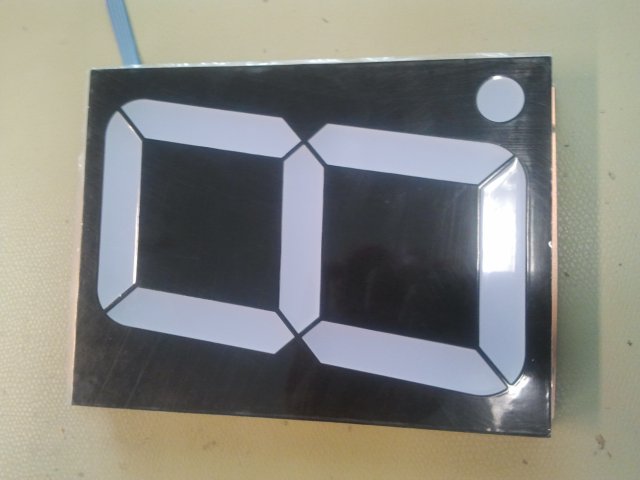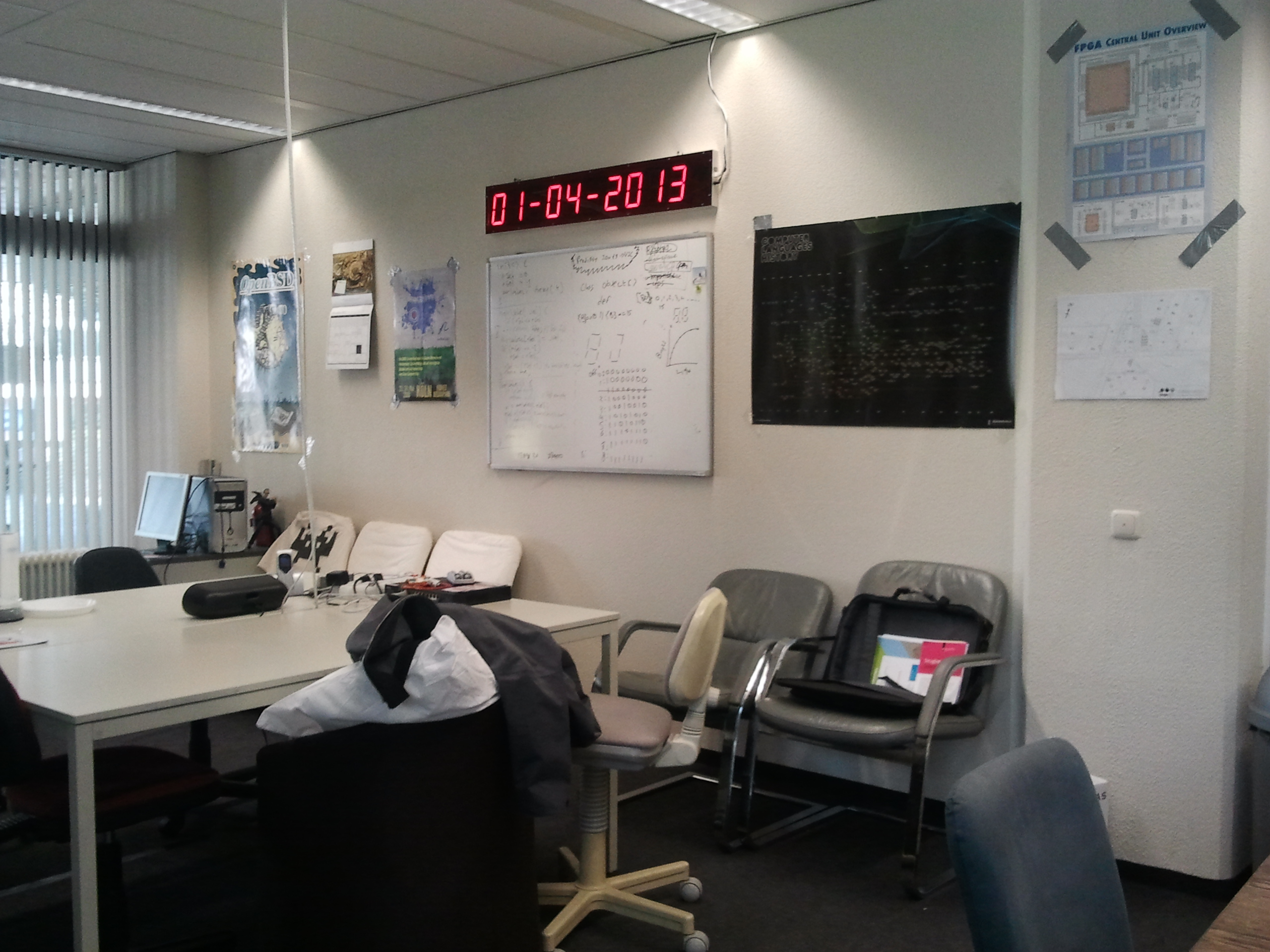Difference between revisions of "Epoch clock"
(pictures to gallery, added youtube video) |
m (set project picture) |
||
| Line 3: | Line 3: | ||
|Members=Danny Witberg | |Members=Danny Witberg | ||
|Description=Our own clock in the space! | |Description=Our own clock in the space! | ||
| + | |Picture=Unix epoch clock.jpg | ||
}} | }} | ||
== Introduction == | == Introduction == | ||
Latest revision as of 22:53, 3 November 2015
| Project: Epoch clock | |
|---|---|
| Featured: | |
| State | Completed |
| Members | Danny Witberg |
| GitHub | No GitHub project defined. Add your project here. |
| Description | Our own clock in the space! |
| Picture | |

| |
Introduction
A clock in a hackerspace is something that is optional, most of the times you don't want to leave a a particular time, or leaving in general. Alternatively, Most of the laptops do have the right time. However, a clock in the space could be a nice project to do, with addition of a twist. Some huge 7 segment displays were ordered, and the wildest ideast came to mind about what functionality can be added to a clock.
Feature list
- For network connectivity, a raspberry pi can be used as a brain for the clock. The GPIO pins of the Rpi can be used for interfacing with the display.
- A serial protocol for display interface simplifies the overall design. A popular 74HC595 is readily available and easy to use.
- The driving voltage for the display can vary from about 7,5 volts (the decimal point) to 15 vols (all other segements). because of this difference, a constant current mode driver is preferred over a standard ULN2803 type PNP darlington driver. Moreover, the ULN needs 5V TTL levels to operate, while a current mode driver can be adapter to support the 3V3 logic levels the Raspberry Pi outputs.
- The clock should react to the spacestate API, so in the rare case the hackerspace is unmanned, the clock is off. This also supports the green energy policy our space should have. With network connectivity already implemented, this is done easily.
- As a twist, we can display Unix timestamp instead of regular human readable time. Hence the name: Epoch clock.
Implementation
First, a PCB is made to drive all the segments of the display. It has to accomodate the 74HC595 shift register, as well as 8 constant current mode drivers. Because the displays are huge (16cm height), a bottom part is connected to the main top part with 4 wires. The bottom part is used to mount the displays to a supporting plate. Ten of these displays are daisy-chained and put into a frame. The edge of the frame is made out of aluminium U shaped profiles, the bottom is made out of triplex plywood. All of the display modules are screwed in the bottom. At the start of the chain of displays, the Raspberri Pi is connected, and some cutouts are made at the side of the frame for network and USB connectors. The front face of the case is made of 120x20cm transparent red 4mm plexiglass. Just enough to see the inner workings, and enhance the readability of the clock.





